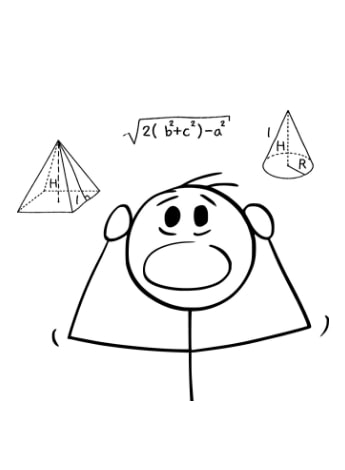
Children and pain

The Australian Pain Society’s 43rd Annual Scientific Meeting was held in Canberra in April. This year’s theme was ‘In the IASP Global Year for Integrative Pain Care’ and several sessions considered pain in children. Here three of the presenters share their work on gaining a better understanding of how children perceive pain and on new ways to approach pain education for this population.
What if kids learnt about the amazing science of pain at school?
Let’s start with four mind-blowing facts.
Fact one—kids challenged by chronic pain miss one-fifth (22 per cent) of school. That’s one day per week on average. Participation restrictions (as per the World Health Organization’s International Classification of Functioning, Disability and Health framework) are an important focus in all physiotherapy care.

Dr Joshua Pate.
Because research has shown that chronic pain has an extensive impact on life more broadly, participation in school, sport and hobbies is an essential consideration when working with families challenged by chronic pain.
Fact two—approximately one to two kids per class have chronic pain. The prevalence data available for chronic pain in children is surprisingly similar to the data in adults. This means that the overall resulting burden is huge.
Fact three—in 2018, chronic pain cost Australia $139 billion. This underscores the importance of paediatric pain research; preventive work must start in order to reduce this burden for future generations.
Fact four—kids with chronic pain have poorer outcomes as adults. This isn’t only the likelihood of chronic pain or opioid use, but work absence, academic outcomes, mental health challenges… unfortunately, this list goes on and on. As a profession, surely we must become more forward-thinking.
Preventive pain science education
Potential benefits of learning about pain as a child could be that pain becomes less invisible, that children are more able to help others participate in school and sport, and that there is less stigma, less emotional distress and a reduction in pain-related disability.
A potential harm could be that a child misunderstands the education. For example, a common misconception is that ‘pain is all in your head’. This likely leads to further stigma.

Weighing up these benefits and harms, the future looks optimistic but more research is certainly needed.
It is early days for research into paediatric pain science education, particularly education with a preventive focus.
Almost all of the intervention studies on pain science education in kids have been conducted in the past five years. That is very recent in the scheme of scientific research.
We have so much still to learn. It is an exciting time to be part of one of the many teams around the globe investigating this topic.
In my talk, I shared a study I had recently led, a single-case experimental design in which we developed a sham educational children’s book.
Children acted as ‘their own control group’ at nine timepoints over six weeks. We identified variability in perceived conceptual changes according to the perspectives of the interviewer, the children’s verbal responses and their survey responses.
There are many challenges in applying sufficient rigour to research related to the effectiveness of education. This is an area I plan to dive further into in the years to come.
I also discussed resources that I’ve worked on that can facilitate conversations about pain, including my TED-Ed videos as well as the new children’s book series Zoe and Zak’s Pain Hacks 1–5, which is now available in libraries, schools and stores.
Alongside all the talented presenters at the conference, it was such a privilege to not only to showcase some highlights, but also to share some of the very long roller-coaster rides involved in developing these resources.
I encourage you to join in the fun at next year’s Australian Pain Society Annual Scientific Meeting in Darwin in late April.
>> Dr Joshua Pate is a senior lecturer in physiotherapy at the University of Technology Sydney, a senior physiotherapist and the author of pain science children’s book series Zoe and Zak’s Pain Hacks. His research is focused on a child’s concept of pain—the way that pain’s definition, purposes and mechanisms are understood. He delivered the Tess Cramond Lecture at the Australian Pain Society’s Annual Scientific Meeting.
Chronic pain at school
It’s concerning that children with chronic pain miss an average of 22 per cent of school (Norton & Southon 2020).
Schooling is the most important modifiable social determinant of health due to the opportunities it provides for wellbeing, such as social connection, physical health and learning (World Health Organization 2018).
Inclusion at school is therefore very important for children experiencing chronic pain.
However, myths about pain exist in schools.

Rebecca Fechner.
And these myths could be contributing to missed school participation, stigma or even the development of chronic pain.
Children report being told that they’re ‘faking it’ or that their pain is ‘all in their head’ (Wakefield et al 2021). A lack of chronic pain knowledge and a lack of understanding from teachers and school personnel contribute to pain-related stigma at school (Wakefield et al 2018).
Teachers are in a prime position to influence their students in everyday interactions given that students spend 40 per cent of their awake time at school.
In addition to their role in academic learning, teachers are the adult caregivers at school and students turn to them for advice, modelling, support and connection.
When it comes to pain, a teacher’s knowledge, beliefs, training and relationship duties will affect how they respond to students in any given moment. This in turn will affect a child’s ability to cope, their memory of pain and their future pain processing and expression (Noel 2017).
Everyday pain encounters really matter and supporting adults are influential (Wallwork et al 2022).
Teachers are likely to be instrumental in improving outcomes for children with chronic pain and are therefore key stakeholders for preventive pain education at school—the focus of my PhD.
How do we target pain science education at teachers?
We conducted a study to assess a teacher’s concept of a student’s pain using the Concept of Pain Inventory-Proxy (COPI-Proxy).
We surveyed 233 teachers by presenting them with a vignette of a 12-year-old female student with stomach pain. We then assessed their concept of pain and compared that to their concept of the student’s pain.
What did we find?
Let’s start with how the new COPI-Proxy tool performed. The COPI-Proxy has acceptable internal consistency (Cronbach’s alpha = 0.72) and moderate convergent validity (r=0.56) with the original Concept of Pain Inventory (COPI).
In a practical sense, this finding highlights a potential benefit of having both the COPI and the COPI-Proxy available when considering targeted pain science education.

The choice of tool would depend on who and why you would want to target pain specific education. For example, to treat individual pain beliefs, you would use the COPI to target their own beliefs.
To target a teacher’s beliefs about their students’ pain, and potentially therefore their response to it, you could use the COPI-Proxy.
Clinical implications
Our results indicate that it is possible for teachers to hold separate beliefs about their own pain and their students’ pain. About half the time, teachers answered differently in the COPI and the COPI-Proxy.
This means that we might not necessarily need to change a teacher’s own beliefs in order to change how they respond to pain in their students. When considering treatment interventions that target responses to classroom pain, this is promising.
However, approximately half of the time teachers did not vary in their responses, suggesting that they likely project their own beliefs onto their students.
We don’t always know if these are helpful beliefs or not. For example, some teachers may believe that slouched posture leads to arthritis and that this means back surgery is imminent.
One could imagine the effect of projecting such beliefs onto their students, particularly for students who are more vulnerable to social influence from their teachers.
In conclusion, the COPI-Proxy shows promise as a starting point for directing targeted education but further exploration regarding particular beliefs is indicated.
Pain-related stigma at school
Our stigma-focused exploratory questions revealed nuances in pain understanding and communication that could be contributing to the felt stigma of students. Only 75 per cent of teachers thought that the child’s pain in the vignette was real.
Key criteria for a teacher deciding whether or not the pain was real included the meaning and purpose of pain, associated behaviours and the observed pattern of pain.
Although teachers most likely have the best intentions for their students, these formulae for deciding pain ‘realness’ are probably exacerbating the felt stigma.
Teacher responses to the survey include:
• ‘Could be an exit strategy or a way out of the next lesson.’
• ‘Crying is difficult to fake.’
• ‘If it’s intermittent and related to anxiety then yes it would be real especially to her even if not a physical issue like IBS.’
• ‘Her pain could be a way of getting out of class for the session. Or her pain could be genuine and she has something ailing her.’
Stigma is complex but pain science education could play a role in changing the way teachers apply these formulae for responding to pain.
Clinically, we know the importance of conveying that pain is always real, not just 75 per cent of the time.
Potentially, pain science education could support teachers to take a more contemporary approach to pain through understanding the science behind key concepts such as the individuality of pain experiences and that many things can contribute to pain.
It makes sense that pain science education targeted at teachers could have huge implications for how they respond to their students and therefore for felt stigma at school (Fechner et al 2023).
>> Rebecca Fechner APAM is a PhD candidate at the University of Technology Sydney and a senior physiotherapist with the Queensland Interdisciplinary Paediatric Persistent Pain Service. Rebecca’s passion for understanding how the development of mind–body connection through childhood experiences affects adult functioning is driving her pursuit of better outcomes for those experiencing persistent pain.
- References
-
Fechner, R., Noel, M., Verhagen, A., Turbitt, E., & Pate, J. W. (2023). Do Teachers Question the Reality of Pain in Their Students? A Survey Using the Concept of Pain Inventory-Proxy (COPI-Proxy). Children, 10(2).
Noel, M. (2017). Remembering the Pain of Childhood: Development, Impact, and Intervention. Canadian Journal of Pain, 1(1), 1-1. https://doi.org/10.1080/24740527.2017.1329272
Norton, J., & Southon, N. (2020). Exploring the Prevalence of Pediatric Chronic Pain and School Absenteeism for Therapists Working in Schools: A Systematic Review with Meta-Analysis. Physical & Occupational Therapy In Pediatrics, 41, 227 - 243.
World Health Organization. (2018). Promoting health: Guide to national implementation of the Shanghai Declaration.
Wakefield, E. O., Belamkar, V., Litt, M. D., Puhl, R. M., & Zempsky, W. T. (2021). "There's Nothing Wrong With You": Pain-Related Stigma in Adolescents With Chronic Pain. J Pediatr Psychol. https://doi.org/10.1093/jpepsy/jsab122
Wakefield, E. O., Zempsky, W. T., Puhl, R. M., & Litt, M. D. (2018). Conceptualizing pain-related stigma in adolescent chronic pain: a literature review and preliminary focus group findings. Pain reports, 3(Suppl 1), e679-e679. https://doi.org/10.1097/PR9.0000000000000679
Wallwork, S. B., Noel, M., & Moseley, G. L. (2022). Communicating with children about ‘everyday’ pain and injury: A Delphi study [https://doi.org/10.1002/ejp.2008]. European Journal of Pain, n/a(n/a). https://doi.org/https://doi.org/10.1002/ejp.2008
Harnessing children's picture books to transform conversations about pain
As a pain researcher with young children (I have two kids, aged four and six), I am curious about how children learn about and navigate their pain and injury experiences.
I take note of how they react when they fall over and how they talk about their pain or injuries and I nerd out with them when they find a bruise or graze that they didn’t even know about.
What I have learnt from these observations has led to my current program of research: can we target the early years of life to safeguard children from the development of future pain problems? How do children learn about pain?
It turns out that there are many ways that young children learn about ‘how pain works’. This includes their own pain experiences—pain from minor injuries such as scratches, cuts and bruises; pain from more significant injuries such as broken bones; and procedural pain experiences such as vaccinations.
They may also learn from their parents or caregivers, through observation and/or role modelling or in a variety of social, cultural and environmental contexts.
Learning about pain through children s popular media
The American Academy of Pediatrics advises that preschool-aged children should not watch more than one hour of TV per day.
However, research shows that up to 90 per cent of children in this age group exceed this recommendation. Depictions of pain and injury in children’s popular media such as TV and movies may therefore be a powerful tool for introducing pain concepts to young children.
Researchers in Canada recently investigated how pain and injury are presented in young children’s popular media (Mueri et al 2021).

Dr Sarah Wallwork.
They found that the most common representation of pain was pain that was intentionally inflicted, whereas more realistic ‘everyday’ pain, chronic pain and procedural pain were much less common.
Gender stereotypes were prevalent—boy characters sustained more pain and/or injuries but observing characters were more responsive towards girl characters’ pain. There was also a lack of empathy from observing characters. Overall, pain was not portrayed in a realistic way.
When parents were asked for their thoughts on how pain and injury were depicted (Pavlova et al 2022), some were not concerned about these findings and thought that in this context, pain was described in a way that was meant to be amusing.
Others believed that children’s media had the potential to be educational if pain was shown in a realistic manner.
Learning about pain through shared picture book reading
In a similar light, we are currently investigating how pain and injury are depicted in young children’s picture books.
Australian children are regularly exposed to picture books, both at home and in educational settings, so picture books may be another potentially powerful tool for teaching children about pain.
The initial findings of this work, which is led by University of South Australia undergraduate physiotherapy student Nayab Mehar, show a slightly different picture from what our Canadian colleagues found in TV and movies.
Roughly one in five children’s picture books includes pain or injury. Acute pain (such as from a bee sting or burn) appears to be the most common example.
However, the messages within the narratives of these books only convey meaning when they are engaged with.

The context of ‘shared reading’ between a caregiver and a child provides the opportunity to interpret and discuss the messages about pain through ‘in the moment’ discussions, reminiscing about previous experiences and translating new information into future experiences.
With this in mind, we recently investigated caregiver–child interactions during shared picture book reading when the narrative of the picture book includes pain and/or injury.
We recruited 20 caregiver–child groups (eight male, 12 female caregivers; 27 children—10 boys, 17 girls) from South Australian public libraries.
Caregivers chose two to three books (from a pool of eight books with pain or injury depictions) to read to their children.
All caregivers and children were naive to the pain-related aims of the study.
We took this approach because we didn’t want to prompt conversations about pain or injury. Rather, we wanted to see if these conversations occurred organically. And they did.
We found that shared picture book reading provided the opportunity to talk about pain-related messages such as what might lead to pain and injury as well as first aid and healing processes.
It often prompted sympathy from the caregiver and/or the child towards characters experiencing pain or injury.
Similar to the work looking at children’s TV and movies, we found that pain and injury in picture books can sometimes be amusing.
Importantly, this research found that shared picture book reading allows children to learn about pain, depending on how pain and injury have been portrayed within the text and in the illustrations of the book. Conversations and interactions were often guided by how the author and illustrator had presented pain and injury.
Our work suggests that shared reading of children’s picture books could be harnessed to direct children’s understanding of pain, although we don’t yet know what content would best facilitate helpful conversations between the reader and the child.
Collaborators in this work are Associate Professor Melanie Noel, University of Calgary; Professor Sue Nichols, University of South Australia; Dr Abbie Jordan, University of Bath; Associate Professor Tory Madden, University of Cape Town; and Professor Lorimer Moseley AO APAM FACP, University of South Australia.
My colleagues and I would like to thank the Australian Pain Society’s Cops for Kids Clinical Research Grant for funding this work.
>> Dr Sarah Wallwork APAM is a research fellow within IIMPACT in Health at the University of South Australia. Sarah’s research aims to make a generational shift in the way young children understand pain, injury and recovery to reduce the development of unhelpful misconceptions about pain.
- References
-
Pavlova M, Mueri K, Kennedy M, Wallwork S, Moseley GL, Jordan A, Noel M. Portrayals of Pain in Children's Popular Media: Mothers' and Fathers' Beliefs and Attitudes. Front Pain Res (Lausanne). 2022 May 6;3:898855. doi: 10.3389/fpain.2022.898855. PMID: 35599967; PMCID: PMC9122327.
Mueri K, Kennedy M, Pavlova M, Jordan A, Lund T, Neville A, Belton J, Noel M. The sociocultural context of pediatric pain: an examination of the portrayal of pain in children's popular media. Pain. 2021 Mar 1;162(3):967-975. doi: 10.1097/j.pain.0000000000002086. PMID: 33259461.
© Copyright 2024 by Australian Physiotherapy Association. All rights reserved.





